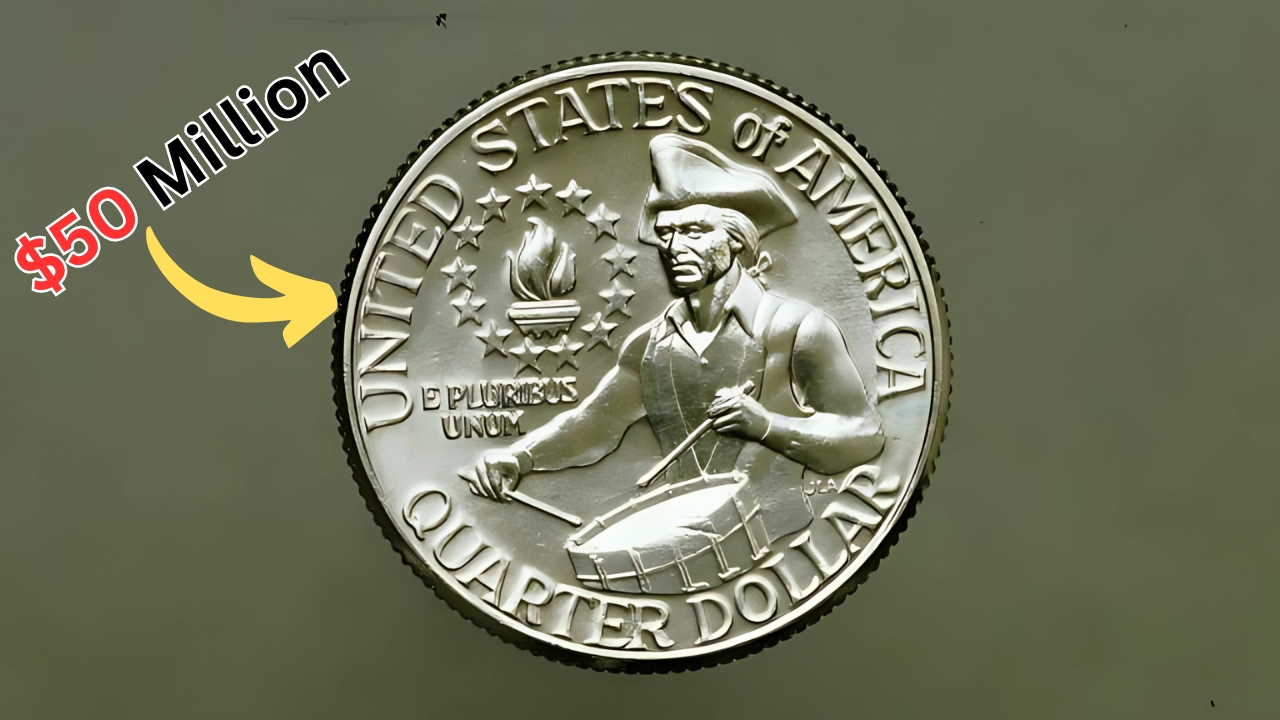The Mysterious Bicentennial Quarter: More Than Just Spare Change
In the midst of our daily routine, we often overlook the ordinary objects that surround us. Coins, for instance, are typically seen as mere change, used for small transactions and then discarded. However, some Bicentennial quarters have become coveted collectibles, with prices that would astound even the most casual coin enthusiast.
A Brief History: The Bicentennial Quarter
The 1970s marked a significant period in American history, with the nation healing from the wounds of the Vietnam War and the Watergate scandal. To celebrate its 200th birthday, the United States government recognized an opportunity to involve everyday citizens in the commemoration process through a medium that was readily available to everyone: circulation coinage. In 1973, Congress authorized the redesign of the quarter, half-dollar, and dollar coins for the bicentennial celebration.
The Treasury Department held a national design competition for the new reverse design, and Jack L. Ahr’s colonial drummer motif was selected for the quarter. This design replaced the traditional eagle, featuring a Revolutionary War drummer facing left with a victory torch encircled by 13 stars (representing the original 13 colonies). The obverse stayed with Washington’s familiar profile, but incorporated the dual date "1776-1976" instead of a single year.
The Variety and Rarity of Bicentennial Quarters
While most Bicentennial quarters remain common, certain varieties have emerged as the true prizes, creating a fascinating subset of American numismatics that continues to surprise collectors and casual coin handlers alike. The most popular premium Bicentennial quarters are those struck in 40% silver, a nod to America’s coinage heritage.
Two distinct silver varieties exist:
- Uncirculated Silver (S-mint): Produced at the San Francisco Mint with a standard finish but containing 40% silver, these quarters were sold in blue envelope three-piece sets (with matching half dollars and dollars). Approximately 4.9 million sets were produced. Individual quarters in pristine condition typically sell for $5-20, with complete sets in original packaging commanding $20-40.
- Proof Silver (S-mint): Also struck in San Francisco, but with mirror-like fields and frosted design elements, these premium quarters were sold in brown velvet-lined cases. About 4 million proof sets were made. Individual quarters in perfect condition generally sell for $8-30, with complete three-piece sets in original packaging fetching $30-60.
The Silver Content: A Price Floor
The 40% silver content provides a base price for these coins, with each coin containing approximately 0.0739 ounces of pure silver. During periods of high silver prices, their melt value can approach or exceed their numismatic worth, though most collectors preserve them for their commemorative and collectible status rather than metal content.
The True Rarity: Error Coins
The truly extraordinary prices belong to rare error coins, which have become the crown jewels of Bicentennial quarter collecting. Manufacturing anomalies that somehow escaped the Mint’s quality control have created some of the most valuable coins in this series. These errors, such as double dies, have transformed an ordinary quarter into a $150-400 collectible.
Doubling Varieties: The Most Valuable Errors
Among the most valuable Bicentennial quarter errors are those exhibiting doubling in the design elements. These "double die" errors occur during the hub-and-die manufacturing process when something goes slightly awry, creating a doubled image in portions of the design.
On Bicentennial quarters, doubling most commonly appears on the drummer’s hands, drumsticks, lettering, or torch flames. Depending on the severity and location of the doubling, these varieties can transform an ordinary quarter into a $150-400 collectible. The most dramatic examples—those with doubling visible without magnification—have sold at specialized auctions for upwards of $750.
Authenticating Error Coins
Authentication becomes crucial for these varieties, as worn coins or those with machine doubling (a different phenomenon often confused with true double dies) can be mistakenly identified as valuable errors. Professional certification provides the necessary assurance for collectors and investors.
How to Find Error Coins
For those determined to build a Bicentennial quarter collection with investment potential, experts suggest focusing on the following:
- Bank roll hunting: Obtaining rolls of quarters from banks ($10 per roll) and methodically examining each coin before returning unwanted specimens.
- Estate collection purchases: Acquiring unsorted accumulations at estate sales, where older collections may contain overlooked valuable specimens.
- Dealer inventory examination: Carefully inspecting dealer inventory at coin shows, where bulk collections are sometimes processed quickly without detailed attribution.
- Circulation finds: Simply paying attention to pocket change and cash register transactions, particularly in regions with aging populations where older coins circulate more frequently.
A Rarity That Continues to Surprise
Recent stories periodically make headlines, such as a Kentucky collector who found a dramatic double-die Bicentennial quarter in circulation and subsequently sold it for $285 after professional certification—a 1,140% return on the coin’s face value.
The Legacy Beyond Collectibility – The Rare Bicentennial Quarter
Beyond their potential monetary value, Bicentennial quarters serve as tangible connections to a pivotal moment in American cultural history. The mid-1970s represented a time of national soul-searching and celebration—a period when Americans collectively reflected on two centuries of the republic experiment.
These quarters, with their colonial drummer design, connected modern Americans with their revolutionary heritage in a uniquely democratic medium. While most will forever remain worth exactly 25 cents in commercial transactions, their cultural significance transcends face value.
Whether valued at face value or thousands of dollars, each Bicentennial quarter carries with it a piece of American history that continues to circulate through commerce, connecting past and present through everyday coinage. As we approach the 250th anniversary of American independence, these quarters serve as reminders of how we commemorated the 200th—through a medium that reached virtually every citizen, creating numismatic treasures that continue to emerge from pocket change nearly five decades later.

